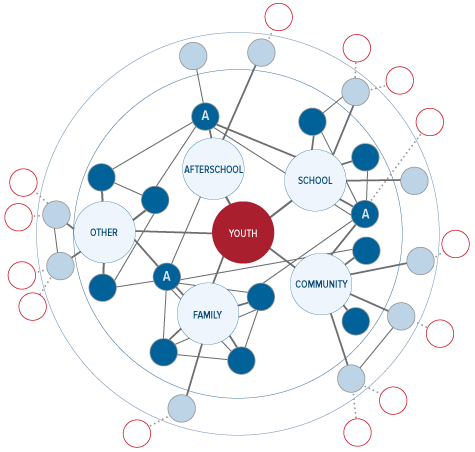Using the Web of Support Framework
By Dr. Shannon Vargar & Dr. Jonathan Zaff, Reprinted from CERES Institute for Children & Youth
Every day young people attend schools, participate in after school programs, show up for jobs, and navigate their neighborhoods filled with adults and peers who have the potential to help them as they pursue their education, work, life, and health goals. Yet, too often, the potential power of these relationships remains unfulfilled, leaving young people without the full impact social supports and capital resources can provide.
The COVID-19 pandemic exacerbated existing inequities in young people’s access to resources they need to thrive in school and throughout their lives. These inequities were most evident in places where young people spend the most time, school and work, and illustrate the essentiality of relationships to young people’s (and all people’s) well-being. As schools rapidly change and test models for the fall after a year of continuous disruption, designing programs, policies, and curricula that acknowledge the power of relationships has never been more important; with designs that appreciate the need to align these emerging strategies with the relationships and resources already available to young people and their families.
Informed by decades of research from multiple fields (psychology, sociology, anthropology, network systems, economics), we developed the Web of Support framework to offer a systems approach to understanding and visualizing how the constellation of of social relationships and social, cultural, and financial capital in a young person’s life facilitates or impedes their opportunities to achieve their goals and live happy, healthy, purposeful lives.
Using the Web of Support Framework is a tool designed for use by youth-serving professionals and by youth, themselves, to:
- define and visualize current and potential supports in a young person’s life in an interconnected web
- identify areas where greater support or more coordinated support or intervenion efforts would be more effective
- brainstorm improving individual relationships and building connections across relationships for young people
- organize programs, policies, and research from a perspective that centers relationships and networks for young people
To access the resource, please click here.










